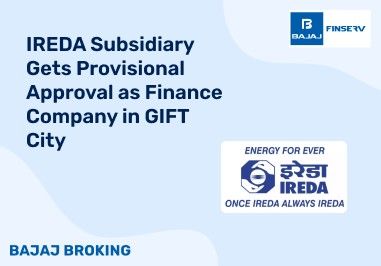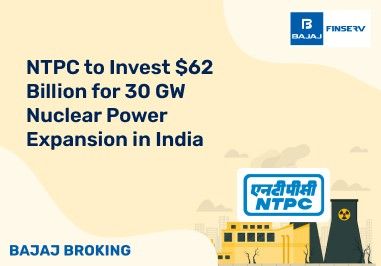There is the Nifty 100 and the Nifty Midcap 150. These serve particular investment markets differentiated by investor's risk taking, objectives of investments, and time horizon. Their study forms an integral part of alignment towards financial objectives.
Nifty 100 is the largest 100 stocks listed in the National Stock Exchange (NSE). It generally tracks the well-established firms with a strong market presence, lower volatility and better performance in the past. The Nifty 100 is suitable for investors prioritizing stability and moderate returns.
The Nifty Midcap 150 index includes 150 mid-sized companies from various sectors. These companies offer growth potential but come with higher volatility compared to their large-cap counterparts. The Nifty Midcap 150 would attract the risk-lovers who would desire more significant returns. Now that we know what is Nifty 100, and Nifty midcap meaning, let’s move on to their comparison.
Summary Metrics: Nifty 100 vs Nifty Midcap 150
The Nifty 100 and Nifty Midcap 150 differ significantly in terms of market cap, risk, and growth potential, as highlighted in the following table:
Metric
| Nifty 100
| Nifty Midcap 150
|
Market Cap
| Large-cap companies
| Mid-cap companies
|
Risk
| Lower risk
| Higher risk
|
Volatility
| Relatively low
| High
|
Growth Potential
| Moderate
| High
|
Dividend Yield
| Higher
| Lower
|
Summary
It yields steady performance having minimum risk so that more and more conservative investors who are near retirement would want Nifty 100 and the Nifty Mid Cap 150 will cater to those long-term investors who could well bear more volatility than growth.
A balanced risk appetite investor will most likely diversify by investing in both indices, thus gaining exposure to the stability of large-cap companies and the dynamic growth of mid-cap firms.
Calendar Year Returns: Nifty 100 vs Nifty Midcap 150
(Placeholder for a comparative chart showing annual returns of both indices)
Explanation
The returns of both indices are aggregated for a particular year, representing the calendar year returns. Because the majority of mid-cap firms are in the growth cycle, Nifty Midcap 150 performs well in any bull market. Nifty 100, however, shows its mettle in bear markets because most of the large-cap companies are well diversified and have sound fundamentals.
For instance:
During a bull run, mid-cap stocks have risen sharply as investors hunt for new emerging companies. Conversely, in a bearish scenario, large-cap stocks cap their losses because of their nature of being defensive, providing a cushion for conservative investors.
1-Year Rolling Return: Nifty 100 vs Nifty Midcap 150
(Placeholder for a rolling return chart comparing the indices over 1-year periods)
Explanation
The 1-year rolling returns provide a sense of how these indices perform over any 1-year period and give a general view of consistency and variability.
Nifty 100:
Generally, rolling returns are stable growth because the index has companies of large capital. The fluctuations are normally within an expected range, hence not so volatile.
Nifty Midcap 150:
The other index shows much more variability in 1-year returns, with higher peaks in bull markets and deeper troughs in bearish periods. This reflects the growth-oriented yet volatile nature of mid-cap companies.
The Nifty 100, however, is safer for those seeking steadier returns with few dramatic fluctuations. The return of investors with a higher risk appetite and more substantial time horizons will find the Nifty Midcap 150 more rewarding in the longer term though on short-term volatility.
Five-Year Time Slices
Examining the five-year time slices really helps investors understand the performance trends of the Nifty 100 and Nifty Midcap 150 long-term, providing a better understanding of how these indices will perform in different market cycles.
Time Period
| Nifty 100 (CAGR)
| Nifty Midcap 150 (CAGR)
|
2015-2020
| 8%
| 12%
|
2016-2021
| 9%
| 14.%
|
2017-2022
| 10%
| 13.5%
|
2018-2023
| 11%
| 16%
|
Explanation
Steady Growth in Nifty 100:
The Nifty 100 has delivered smooth compounded annual growth rates through all the five-year cycles and this is a testimony to the robustness of that index in both the bull as well as bear phases of the market. This, again, is due to stability that emanates from large-cap corporations with good fundamentals and diversified revenue.
Nifty Midcap 150 - Returns:
The Nifty Midcap 150 has outperformed the Nifty 100 in all five-year rolls, with returns ranging from 12% to 16%. The reason that drives this outperformance would be the growth potential of these mid-cap companies, which always grow more in times of a prosperous market.
Volatility Consideration:
Nifty Midcap 150 indeed boasts of relatively superior returns. Very sensitive to Economic Cycle and Market Corrections. A good investor must always be wary of such riskiness and has financial discipline wherein withdrawal of money cannot be allowed during such phases to derive long-term wealth.
Note:
For Conservative Investors:
The Nifty 100 has stable growth with reduced volatility and is appropriate for long-term investment with minimum risk-seeking investors.
For Growth-Oriented Investors:
The Nifty Midcap 150 offers the potential for higher growth over longer periods, but it does come with a higher risk and a longer investment horizon to ride out market fluctuations.
Diversified Approach:
Utilization of both indices into a well-balanced investment strategy can help to achieve all stability from Nifty 100 and growth potential from Nifty Midcap 150.
Index Mutual Funds and ETFs
Index
| Mutual Funds
| ETFs
|
Nifty 100
| Nifty 100 Index Fund, Large Cap Funds
| Nifty 100 ETFs
|
Nifty Midcap 150
| Nifty Midcap Funds, Midcap Growth Funds
| Nifty Midcap ETFs
|
Explanation
Both Nifty 100 and Nifty Midcap 150 have mutual fund and Exchange Traded Funds as channels. Hence, investors find them highly appealing on diversified exposure.
Nifty 100 Mutual Funds and ETFs
These funds invest in India's largest companies and offer stability along with predictable return. Suitable for all those investors looking for a safe long-term investment option with stable growth.
Nifty Midcap 150 Mutual Funds and ETFs
These funds focus on mid-cap companies with high growth potential; however, these have a higher return as well as higher volatility. They are suitable for investors having a high risk appetite and long investment duration.
Conclusion
The Nifty 100 is suitable for the risk-averse investor who wants stability and consistency in returns, while the Nifty Midcap 150 suits investors looking for higher long-term growth and can afford market volatilities. Consider these factors before making a choice between the two.
Disclaimer: Investments in the securities market are subject to market risk, read all related documents carefully before investing.
This content is for educational purposes only. Securities quoted are exemplary and not recommendatory.
For All Disclaimers Click Here: https://bit.ly/3Tcsfuc













